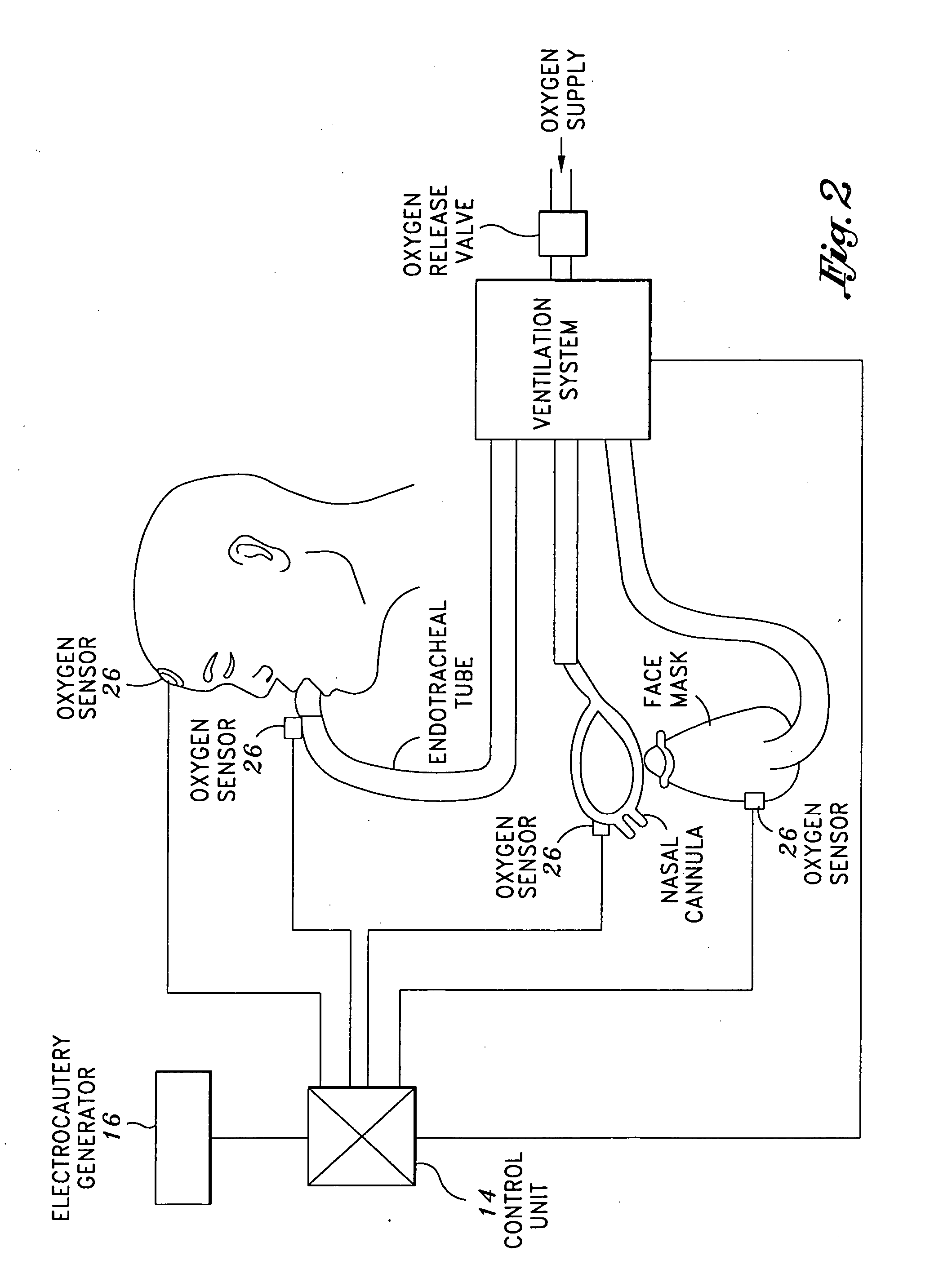Oxygen sensory system that minimizes outbreak of operating room fires
a sensory system and oxygen technology, applied in the field of operating room fires, can solve the problems of extremely prone to fire, the tip of the electrocautery knife, and the beam of the laser device, so as to reduce the potential for the electrocautery device, reduce the impact of injury, and minimize the potential of the electrocautery device.
- Summary
- Abstract
- Description
- Claims
- Application Information
AI Technical Summary
Benefits of technology
Problems solved by technology
Method used
Image
Examples
Embodiment Construction
[0021] The detailed description set forth below is intended as a description of the presently preferred embodiment of the invention, and is not intended to represent the only form in which the present invention may be constructed or utilized. The description sets forth the functions and sequences of steps for constructing and operating the invention. It is to be understood, however, that the same or equivalent functions and sequences may be accomplished by different embodiments and that they are also intended to be encompassed within the scope of the invention.
[0022] Referring now to the figures, and initially to FIG. 1, there is shown an electrosurgical system 10 for performing electrocautery surgical procedures that substantially reduces, if not eliminates, the possibility for such system 10 to ignite or otherwise cause and operating room fire. As shown, the system 10 comprises three essential components, namely, a hand-held electrocautery cautery instrument 12, a control unit 14...
PUM
 Login to View More
Login to View More Abstract
Description
Claims
Application Information
 Login to View More
Login to View More - R&D
- Intellectual Property
- Life Sciences
- Materials
- Tech Scout
- Unparalleled Data Quality
- Higher Quality Content
- 60% Fewer Hallucinations
Browse by: Latest US Patents, China's latest patents, Technical Efficacy Thesaurus, Application Domain, Technology Topic, Popular Technical Reports.
© 2025 PatSnap. All rights reserved.Legal|Privacy policy|Modern Slavery Act Transparency Statement|Sitemap|About US| Contact US: help@patsnap.com



